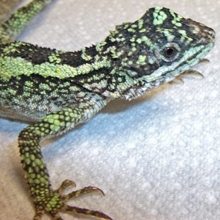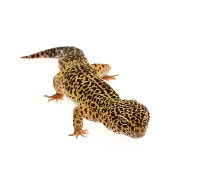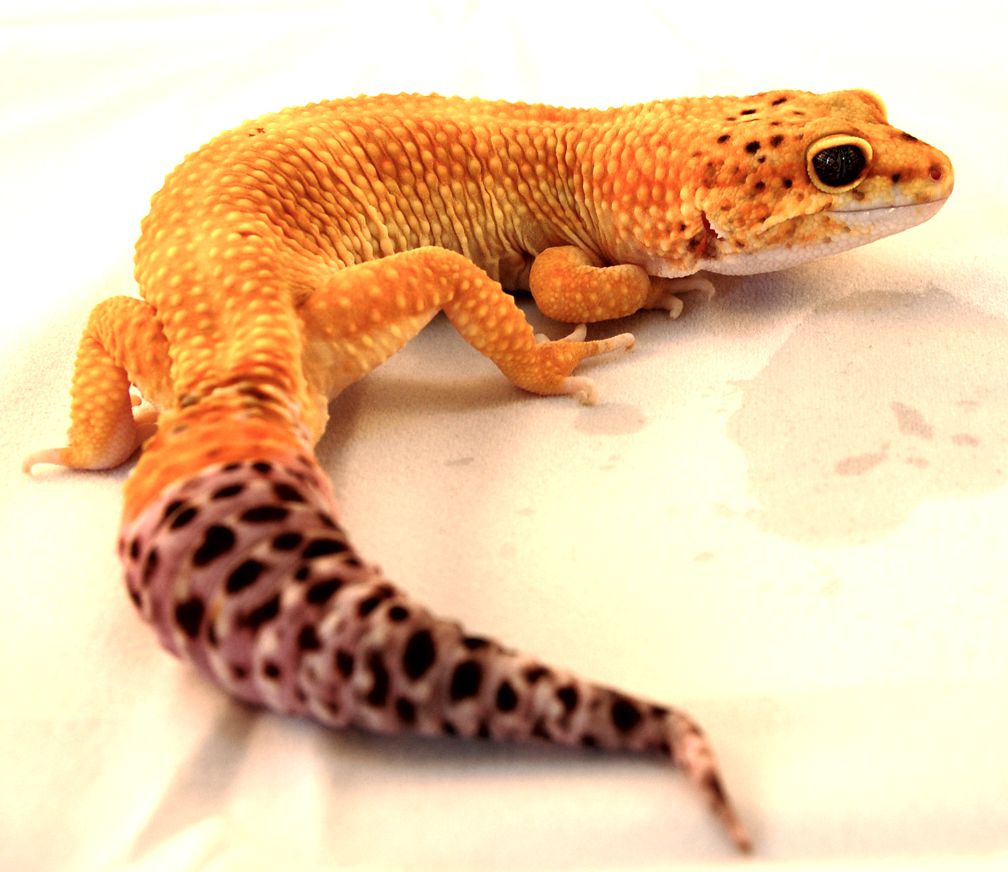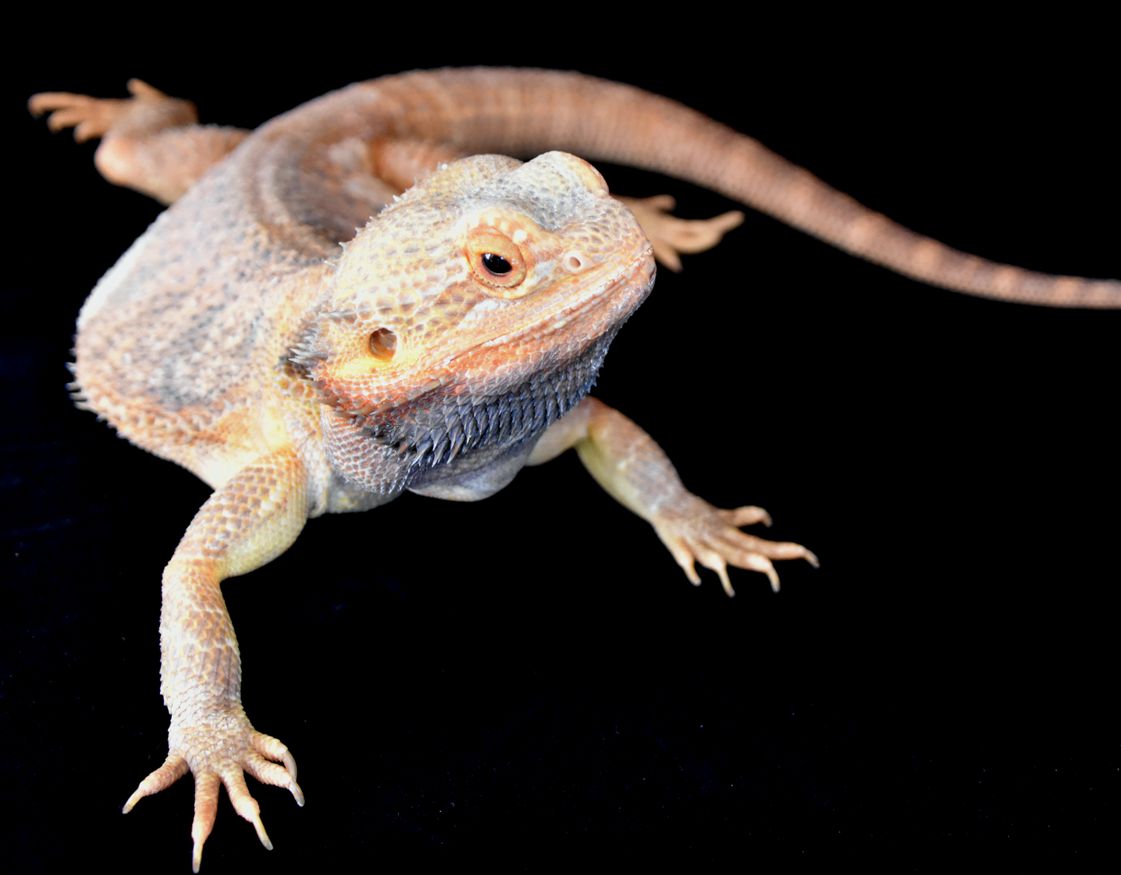Basic Care: Neon Tree Dragon
 Neon tree dragon is a common name used in the pet trade for a variety of small agamid lizards from southeast Asia. Agamid lizards are an Old World family of lizards that include bearded dragons and uromastyx lizards.
Neon tree dragon is a common name used in the pet trade for a variety of small agamid lizards from southeast Asia. Agamid lizards are an Old World family of lizards that include bearded dragons and uromastyx lizards.

 Neon tree dragon is a common name used in the pet trade for a variety of small agamid lizards from southeast Asia. Agamid lizards are an Old World family of lizards that include bearded dragons and uromastyx lizards.
Neon tree dragon is a common name used in the pet trade for a variety of small agamid lizards from southeast Asia. Agamid lizards are an Old World family of lizards that include bearded dragons and uromastyx lizards.
 "Stick Tail" is a common term used to describe a leopard gecko that loses weight until the tail fat disappears leaving behind a thin boney tail. "Stick tail" also affect fat-tail geckos, tokay geckos, and other species of geckos with robust tails that can store fat. A similar wasting disease is known in crested geckos and other Rhacodactylus, and many other geckos.
"Stick Tail" is a common term used to describe a leopard gecko that loses weight until the tail fat disappears leaving behind a thin boney tail. "Stick tail" also affect fat-tail geckos, tokay geckos, and other species of geckos with robust tails that can store fat. A similar wasting disease is known in crested geckos and other Rhacodactylus, and many other geckos.
 Cryptosporidiosis is a common intestinal infection of leopard geckos caused by the one-celled parasite Cryptosporidium varanii (also know in older references as Cryptosporidium saurophilum). Cryptosporidiosis is a very common reason that a leopard gecko will lose weight, and as the tail fat disappears all that remains is a thin boney tail, a condition herpetoculturists often call “stick tail”.
Cryptosporidiosis is a common intestinal infection of leopard geckos caused by the one-celled parasite Cryptosporidium varanii (also know in older references as Cryptosporidium saurophilum). Cryptosporidiosis is a very common reason that a leopard gecko will lose weight, and as the tail fat disappears all that remains is a thin boney tail, a condition herpetoculturists often call “stick tail”.
 Leopard geckos popularity as pets is easy to understand. They are small, cute, typically friendly and easy to handle. They come in a variety of color morphs are require less space than many larger reptiles. They're relatively long lived, many living into their late teens and early twenties. They breed easily in captivity. However, they are prone to problems with their eyes, skin, and skeleton if not cared for properly.
Leopard geckos popularity as pets is easy to understand. They are small, cute, typically friendly and easy to handle. They come in a variety of color morphs are require less space than many larger reptiles. They're relatively long lived, many living into their late teens and early twenties. They breed easily in captivity. However, they are prone to problems with their eyes, skin, and skeleton if not cared for properly.
Green iguanas are very popular pets, but are perhaps one of the most misunderstood and poorly kept all reptile pets.
Bearded dragons may get diarrhea from a number of causes such as stress, parasites, bacterial infections of the intestine, atadenovirus infections, spoiled food, malnutrition, dirty water bowls, unsanitary cages, and inappropriately cool or excessively high temperatures in the cage.
Constipation, which is the failure to produce feces, is a common condition in bearded dragons. There are many possible causes including, but not limited to, dehydration, parasites, poor diet, an injury, infection, and tumors.
 Bearded dragons are social, active lizards that need proper heat, ultraviolet light, and the correct diet with necessary supplements. Bearded dragons may not get along if crowded or territorial so caution with housing them together and ideally never have an adult with baby bearded dragons.
Bearded dragons are social, active lizards that need proper heat, ultraviolet light, and the correct diet with necessary supplements. Bearded dragons may not get along if crowded or territorial so caution with housing them together and ideally never have an adult with baby bearded dragons.
An adult bearded dragon needs a cage at least 3 ft long, 2 ft wide, and 1.5 ft tall.
Pets may be sent home with liquid medications. An oral liquid medication must be given by mouth to be effective. An injectable liquid medication must be given by injection beneath the skin to be useful. Some injectable medications require that the medication is inserted into the muscle to be most effective. It is important that you understand how to read the syringes that are sent home so your pet gets the proper amount of medication at each dose.
All exotic pets, even ones that appear to be outwardly healthy, have the potential to carry and spread contagious diseases that can impact the health of people. This sort of disease is called a "zoonosis", "zoonotic disease", or "zoonotic infection".



